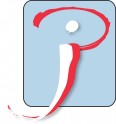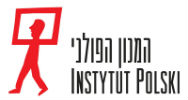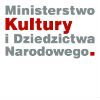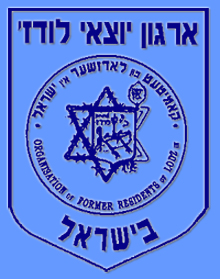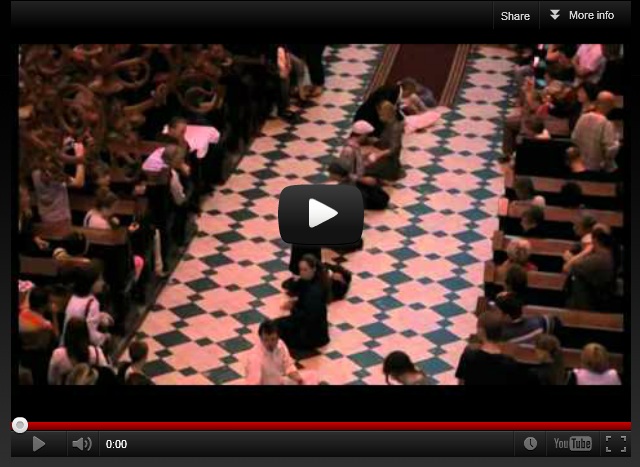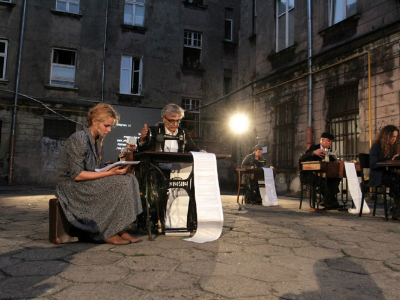 We are presenting video footage of the performance, made by Grupa Filmowa as well as photographs by Kamila Bogulewska.
We are presenting video footage of the performance, made by Grupa Filmowa as well as photographs by Kamila Bogulewska.
Video recording and photographic documentation were possible with the financial support from the Museum of Polish History in Warsaw, under the “Patriotism of Tomorrow” program.
“Szpera '42” is an international and multidisciplinary project, which combines various disciplines of arts: music, dance, photography, video art and theater. It is a journey to real places and history of the Łódź ghetto, it is a meeting of people living there and the story of their lives .It is an attempt to undertake an honest, living dialogue with the memory of the ghetto and to confront it with the contemporary everyday life of the city where we live – with our lives.
The performance was presented on 29 August and 4 September, as a part of the commemoration of the 68th anniversary of the liquidation of the Litzmannstadt ghetto and 70th anniversary of “Wielka Szpera”.
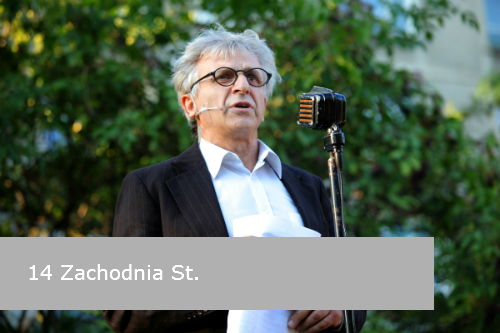 14 Zachodnia St.
14 Zachodnia St.
It is one of the least known and at the same time most important places in the Łódź ghetto. At 13 Lutomierska St., the office of the Jewish fire brigade were located. At the back of the building, on a large square, there were the fire brigade barracks with cars and equipment. It was there that Chaim Mordechai Rumkowski, the Eldest of the Jews in the Łódź ghetto, gave his speeches. A podium with microphones and loudspeakers was placed there, so that Rumkowski’s words could be heard everywhere. The buildings at 13 Lutomierska St. no longer exist, replaced by blocks of flats. Only one of the houses survived (at 14 Zachodnia St.). It was in front of that building that Rumkowski gave his famous speech in September 1942, appealing to the residents of the ghetto to give away their children so that others may be saved.
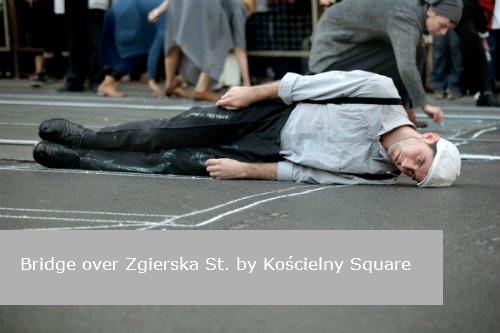 Bridge over Zgierska St. by Kościelny Square
Bridge over Zgierska St. by Kościelny Square
Two streets, Zgierska and Limanowskiego, were excluded from the ghetto and belonged to the Aryan part of Litzmannstadt. The ghetto, intersected by these two streets, was divided into three parts. At first, at specific times, special gates were opened through which the residents could move from one section to the other. In the summer of 1940, three wooden bridges were erected, connecting the divided parts of the ghetto, allowing people to cross over the streets.
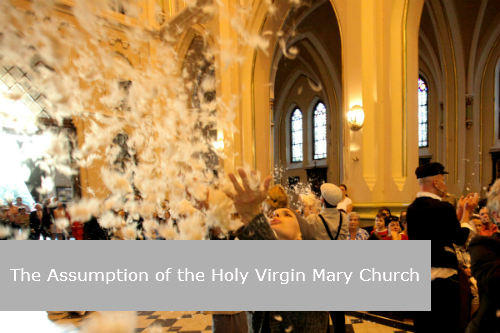 The Assumption of the Holy Virgin Mary Church
The Assumption of the Holy Virgin Mary Church
During World War Two, the church of the Assumption of the Holy Virgin Mary was located within the Łódź ghetto. For thousands of Jews who had to move to the ghetto, the red brick church and the nerby wooden bridge over Zgierska Street were the most important symbols of the ghetto. In 1942, the Nazis decided to transform the church into a warehouse for storing stolen Jewish property. From spring to autumn 1942, clothes of people murdered in Chełmno on the Ner were brought there. Some people discovered the clothing of their loved ones who had been deported from the ghetto in an unknown direction. Then, inside the church, feather and down sorting was organized. The Jews called this place “white factory” and the Virgin Mary - the patron of the temple - Mary of the Down.
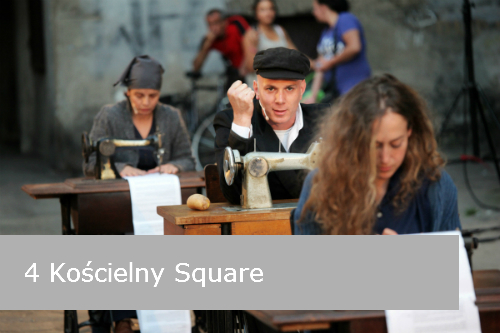 4 Kościelny Square
4 Kościelny Square
In the corner building at Zgierska St. “The Chronicle of the Lodz Ghetto” was created, one of the most important documents of World War Two. Chroniclers collected documents concerning the operation of the ghetto: announcements, posters and circulars as well as Rumkowski’s speeches and deportees’ documentation– their passports and personal letters. Also here, at the Department of Statistics worked the ghetto photographers and graphic artists who created propaganda materials, showing that the ghetto was useful. Many of these documents survived to this day and are now found in the State Archive in Łódź.
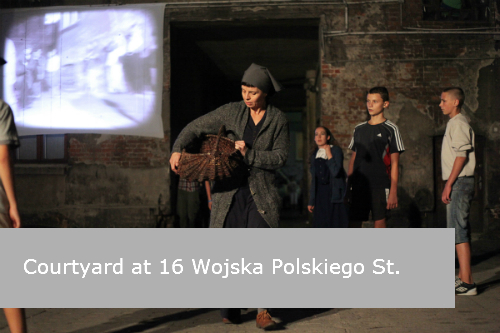 Courtyard at 16 Wojska Polskiego St.
Courtyard at 16 Wojska Polskiego St.
In the years 1940-1944, almost 200 thousand people lived in old buildings in the Łódź districts of Bałuty and Old Town. Jewish families lived in each building. Children, their parents, grandparents, uncles, neighbors. Adults work hard, food was scarce, diseases spread, but children - as children do- were playing how they could. Until to September 1942.
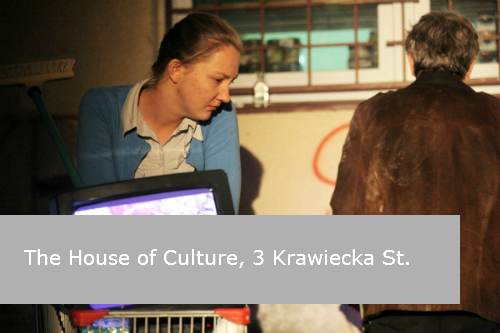 The House of Culture, 3 Krawiecka St.
The House of Culture, 3 Krawiecka St.
This small building, where today a local shop is located, used to be a cinema. The auditorium held 400 seats and a stage, where both symphony orchestra and theater troupes could perform. This was the center of the ghetto cultural life: concerts, theater performances, exhibitions and poetry readings. The house of culture officially opened on March 1, 1941, although theater performances and concerts had already been held there. The residents of the ghetto attended both classical music concerts and light entertainment shows. The troupe consisted of prominent pre-war Jewish artists, including Moshe Puławer and Róża Bloch, the orchestra was by conducted by Dawid Bajgelman, decorations were prepared by Pinchas Schwarz. After transports from Prague, Berlin and Vienna arrived at Litzmannstadt, world-famous virtuosos performed there, as well as children from orphanages. After “wielka szpera”, cultural life in the ghetto practically ceased to exist. Germans deported many artists to Chełmno. In the summer of 1943, the building was converted into a department of quilts and blankets.
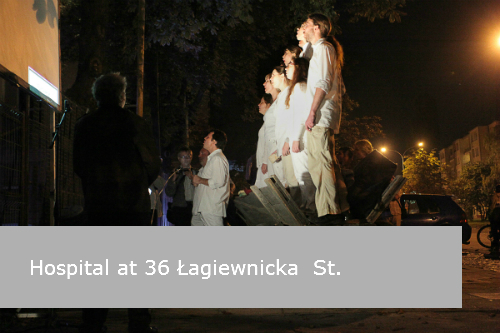 Hospital at 36 Łagiewnicka St.
Hospital at 36 Łagiewnicka St.
The building was constructed for the Health Fund just before the war. It was one of the most modern and elegant buildings in the Bałuty district. During the war, it housed the Department of Health created by Rumkowski and Hospital No. 1. In one of the wings, there was the private apartment of the Eldest of the Jews in the ghetto. Until September 1942, health care in the ghetto functioned more or less normally. Patients were examined (including lung X-rays), prescriptions were written, although the most common documents issued were death certificates. It was only during the September “szpera” that all hospitals were closed down. The Germans deported all the sick to Chełmno on the Ner. The rallying point for people selected for the deportation from the ghetto was located here.
Video recording and photographic documentation were possible with the financial support from the Museum of Polish History in Warsaw, under the “Patriotism of Tomorrow” program.
